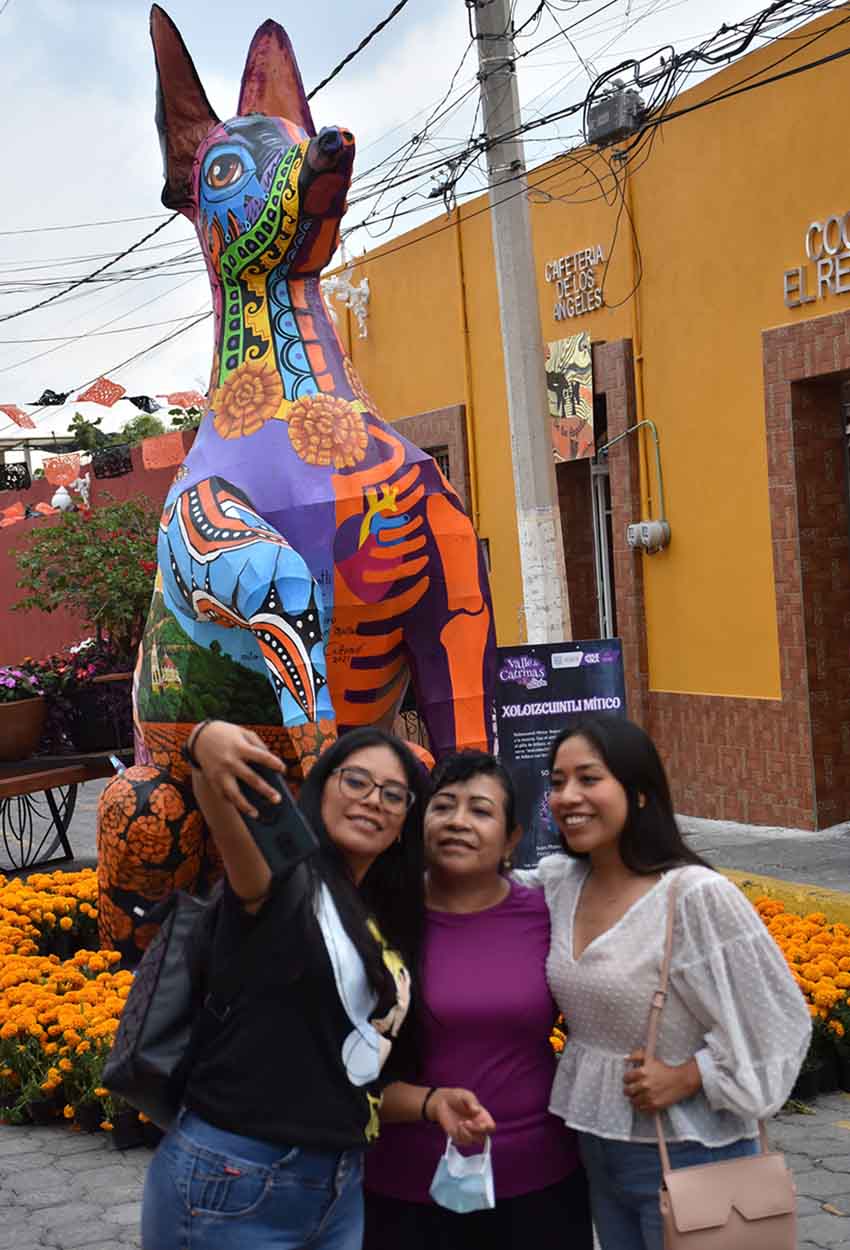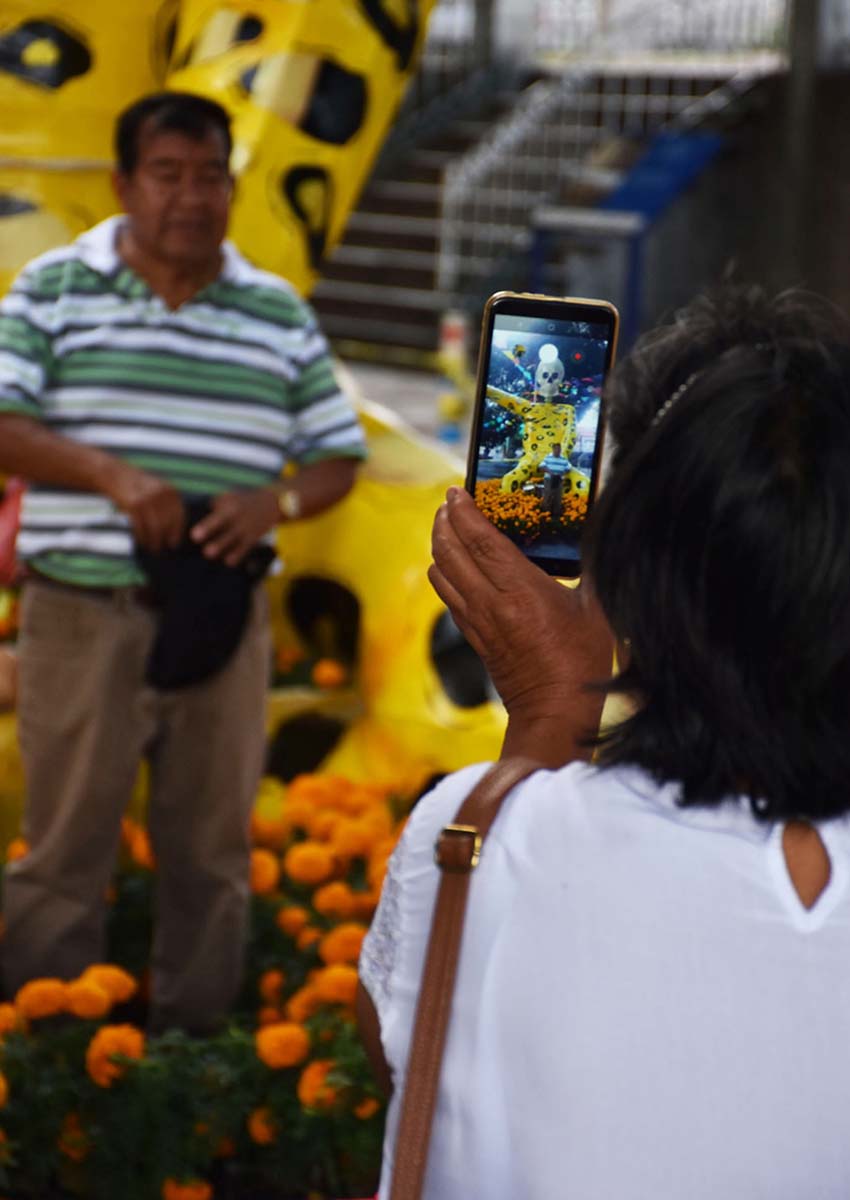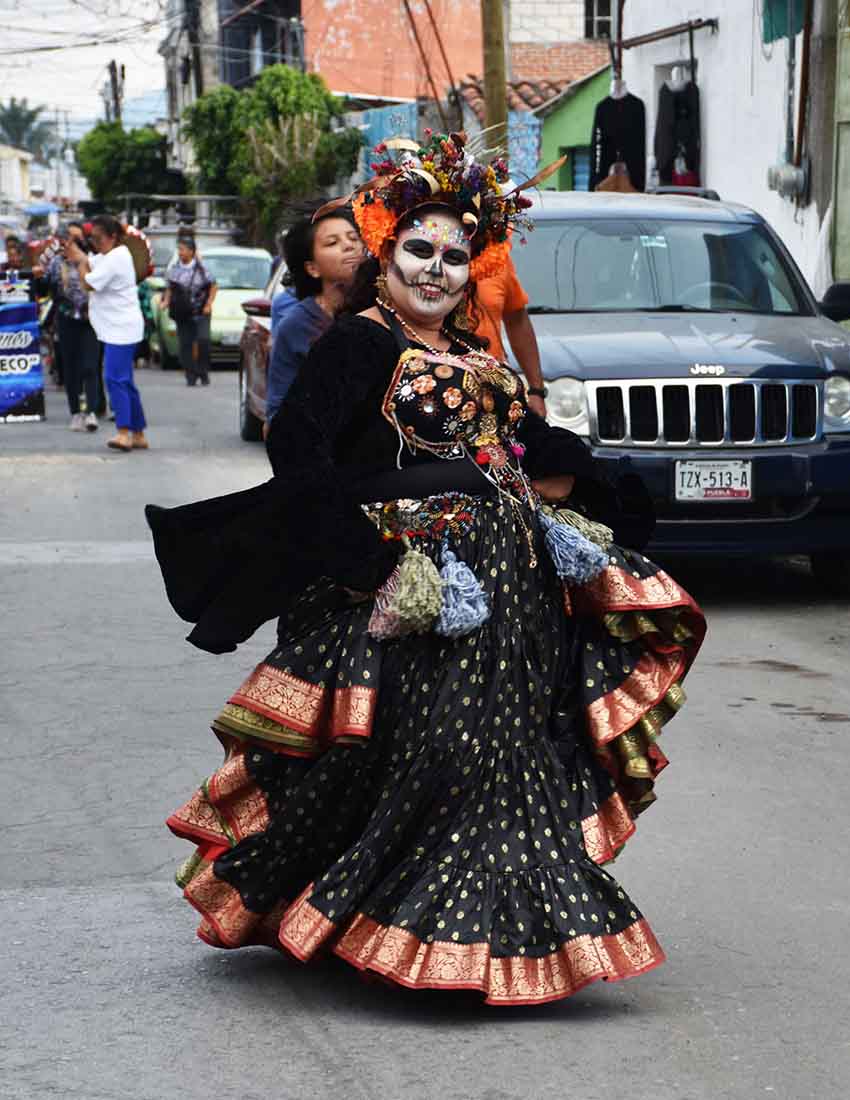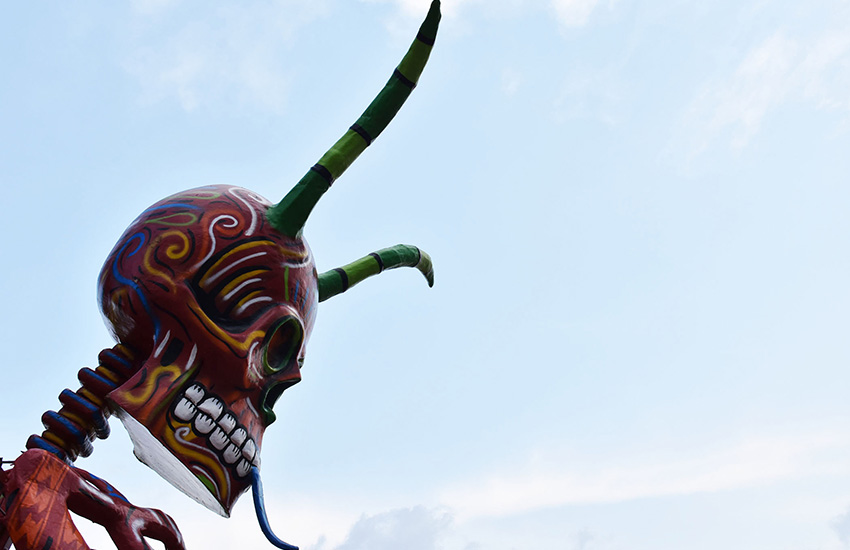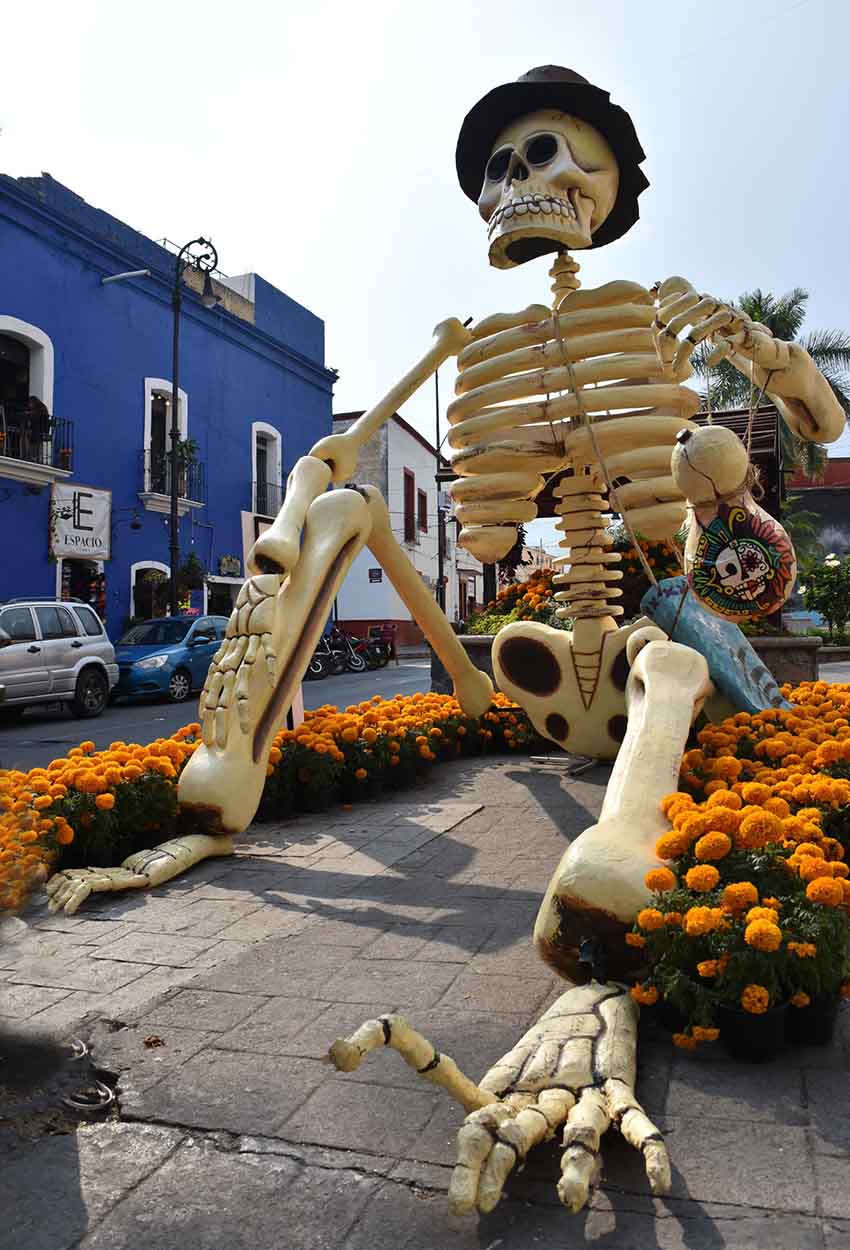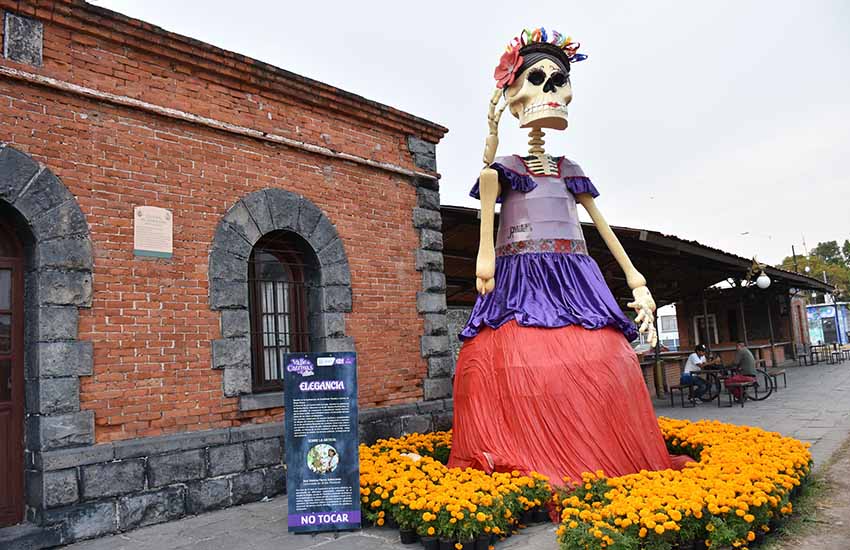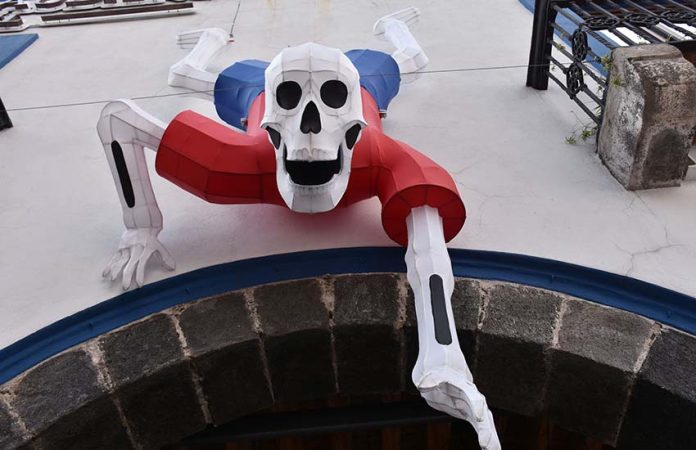In Mexico’s Pueblo Mágico of Atlixco, Puebla, Day of the Dead is not a single-day celebration but a big, festive occasion. Starting in the last couple of weeks of October, a slew of events begins to attract tourists from all over Mexico and abroad.
The biggest event is probably the Calaveras (skeleton) Parade, with participants dressed as catrinas and catrins (the iconic Day of the Dead male and female skeletal figures) as well as characters from legends like The Black Charro (a skeletal Mexican cowboy). But the downtown is full of things to do on the days surrounding Day of the Dead, including public ofrendas (memorial altars) and gorgeous temporary “tapestries” made of thousands of Day of the Dead’s colorful traditional flowers.
Photojournalist Joseph Sorrentino gladly took the opportunity this year to shoot photos for us at the Día de Muertos festivities in Atlixco.
“Atlixco’s got a really lovely zócalo ringed with restaurants and shops and a colonial-era church,” he said. “It has its own pre-Hispanic pyramid that hasn’t been excavated, but locals find ancient artifacts there all the time.”
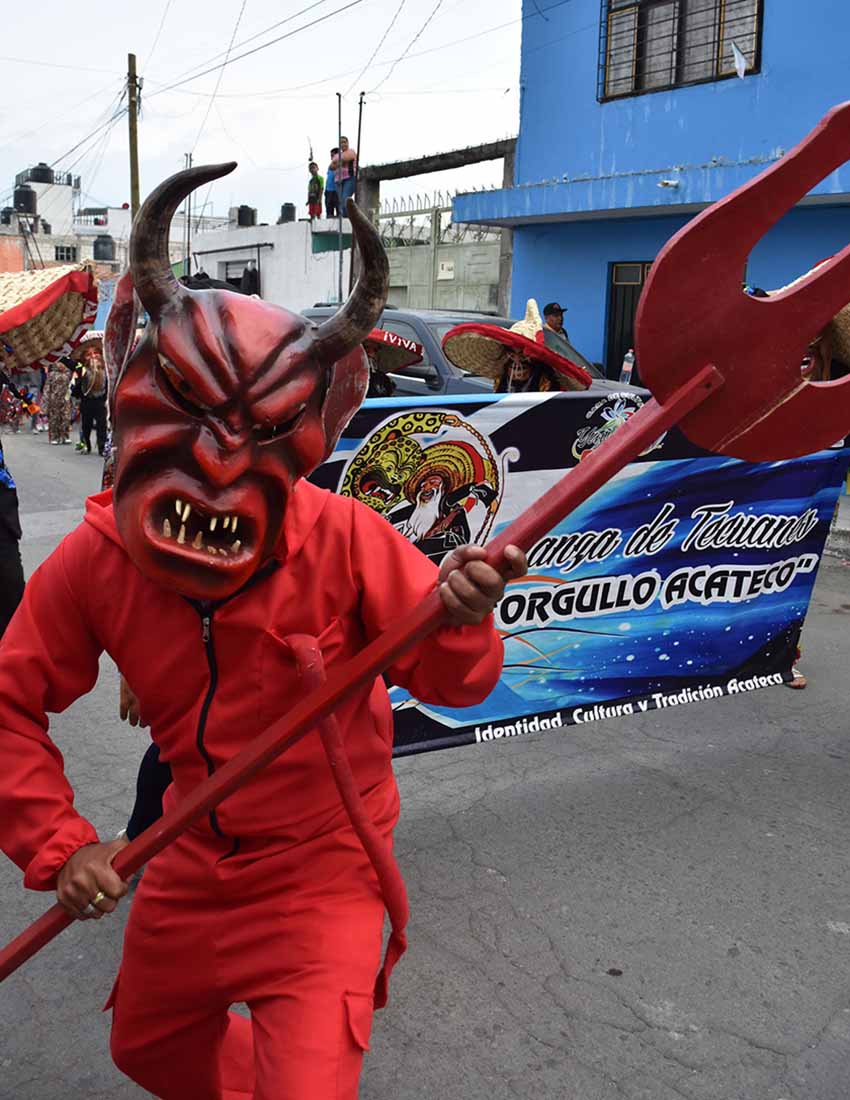
This year, while attending the parade, he found himself interested in a new holiday tradition: 10 different Mexican artists created their own larger-than-life versions of La Catrina and a few other fantastical figures for the city, which have been placed in different residential neighborhoods of Atlixco during the holiday period. They ranged from Sorrentino found that both tourists and locals were lured into traveling from neighborhood to neighborhood to visit the figures.
As he photographed, he kept running into one family in particular, with a young daughter wearing a catrina costume and white makeup on her face. “She was a very happy little girl; she became my best friend,” he said. “She would yell excitedly and run over every time we kept seeing each other.”
He eventually had her pose for his camera after asking her mother’s permission. “I told her to strike a pose, to show me some attitude.” The girl happily obliged with a sassy hand on her hip.
Sorrentino’s last shoot for this photo essay, of dancers in costume, almost didn’t happen, he said. “I’d been shooting for three hours in the sun, and I was all sweated out and dirty and ready to stop when I heard music. This group of dancers suddenly streamed by, like 30 of them, with a live band. They weren’t even part of the parade. They’d just come from somewhere in Puebla to perform.”

“They were in the street, blocking traffic, yet nobody was honking their horn, nobody got upset,” he said. “They just watched from their cars.”
Sorrentino says he loves photographing these sorts of spontaneous moments the best.
“There’s always something happening in Mexico,” he said. “You think to yourself, ‘I’m done,’ and then a parade breaks out.”
Joseph Sorrentino, a writer, photographer and author of the book San Gregorio Atlapulco: Cosmvisiones and of Stinky Island Tales: Some Stories from an Italian-American Childhood, is a regular contributor to Mexico News Daily. More examples of his photographs and links to other articles may be found at www.sorrentinophotography.com He currently lives in Chipilo, Puebla.
